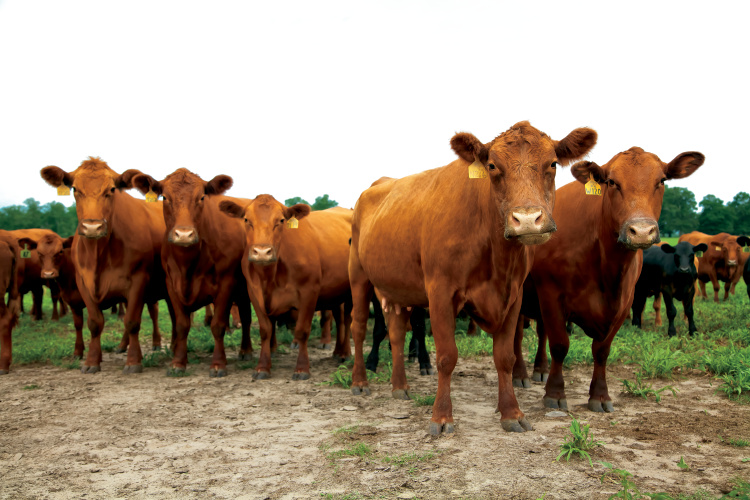Home > Ohio > Ohio Farm to Table > Ohio Has Career Opportunities for Vets
Ohio Has Career Opportunities for Vets
In partnership with: Ohio Department of Agriculture

Across Ohio and the nation, rural communities face a shortage of veterinarians who treat and care for food animals and livestock.
Experts say expensive education may be to blame, driving newly minted vets to seek jobs in high- priced, private, small animal clinics. However, a rewarding veterinary career can go far beyond a pet hospital.
In fact, the Ohio Department of Agriculture has plenty of work opportunities for those seeking a rewarding, well-paying ag career. For example, a day in the work life of an ODA vet may involve detecting a harmful disease in a herd of cattle, or it may be visiting a processing facility and inspecting meat to make sure it is safe, wholesome and properly labeled.
“A large animal veterinary career is very satisfying; we protect and promote Ohio’s livestock and poultry industries,” says Dr. Tony Forshey, DVM, who serves as state veterinarian and chief of the ODA Division of Animal Health. “Veterinary medicine is a very rewarding career, and it’s one of the few careers where you actually impact animal and human health on a daily basis, and that applies particularly in any public service aspect.”
Dr. Forshey relies heavily on large animal practitioners out in hte field to be his eyes and ears on a daily basis, reporting any unusual disease noted on Ohio’s farms.
Addressing a Shortage
Ohio ranks 34th for land size, but 17th for agricultural income. Out of its 75,000 farms, about 45,000 of those have livestock – and a real need for vets.
ODA has more than 20 veterinarians on staff, either in the field or on its campus. Those in the Division of Animal Health monitor and ensure livestock living on farms are healthy. They work as diagnosticians, virologists, bacteriologists and more, performing more than half a million tests each year to promote human and animal health. They monitor diseases easily transmitted between people and animals, such as rabies and influenza, and foreign animal diseases like foot-and-mouth disease, among others.
These veterinarians play a vital role for the state. “We detect potentially harmful diseases. If they occur in an area where we have a veterinarian shortage and they aren’t detected early, there can be large economic losses to the nation – not just in Ohio, but to the nation,” Forshey says. “We need large animal veterinarians.”
The ODA Division of Meat Inspection regularly has opportunities as well, where some students or current veterinarians may not think to apply. Dr. Nick Wagner, DVM, chief of the Division of Meat Inspection, worked in private practice as a rural food animal veterinarian before joining the department.
“I realized there was more that I could do with my education and potentially have a bigger impact, so I made a decision to look at the public health side of veterinary medicine,” says Wagner, who first came to ODA as a field veterinarian.
Division of Meat Inspection veterinarians are responsible for ensuring the safety of meat and poultry products for human consumption. Field vets visit the processing facilities to promote humane handling and animal welfare, as well as verify food safety and sanitation, to ensure all meat is handled properly and is safe to eat once it leaves the facility.

Helping Pay Down Educational Debt
To help attract veterinarians to rural areas, the USDA National Institute of Food and Agriculture offers its Veterinary Medicine Loan Repayment Program (VMLRP). With a guaranteed three-year commitment, VMLRP will pay up to $25,000 every year toward qualified educational debt to practice in the shortage area.
Many veterinarians stay in these areas after establishing themselves, becoming involved in the communities, Forshey says.
As the state veterinarian, he submits a list of counties with shortages every year to USDA for the program, and vets have been awarded and placed in the areas. Those areas are predominantly southeastern and eastern Ohio, Forshey adds.
“We need a lot of veterinarians to protect and promote our agriculture industries,” he says.
To view veterinary medicine career opportunities at the ODA, visit agri.ohio.gov.



